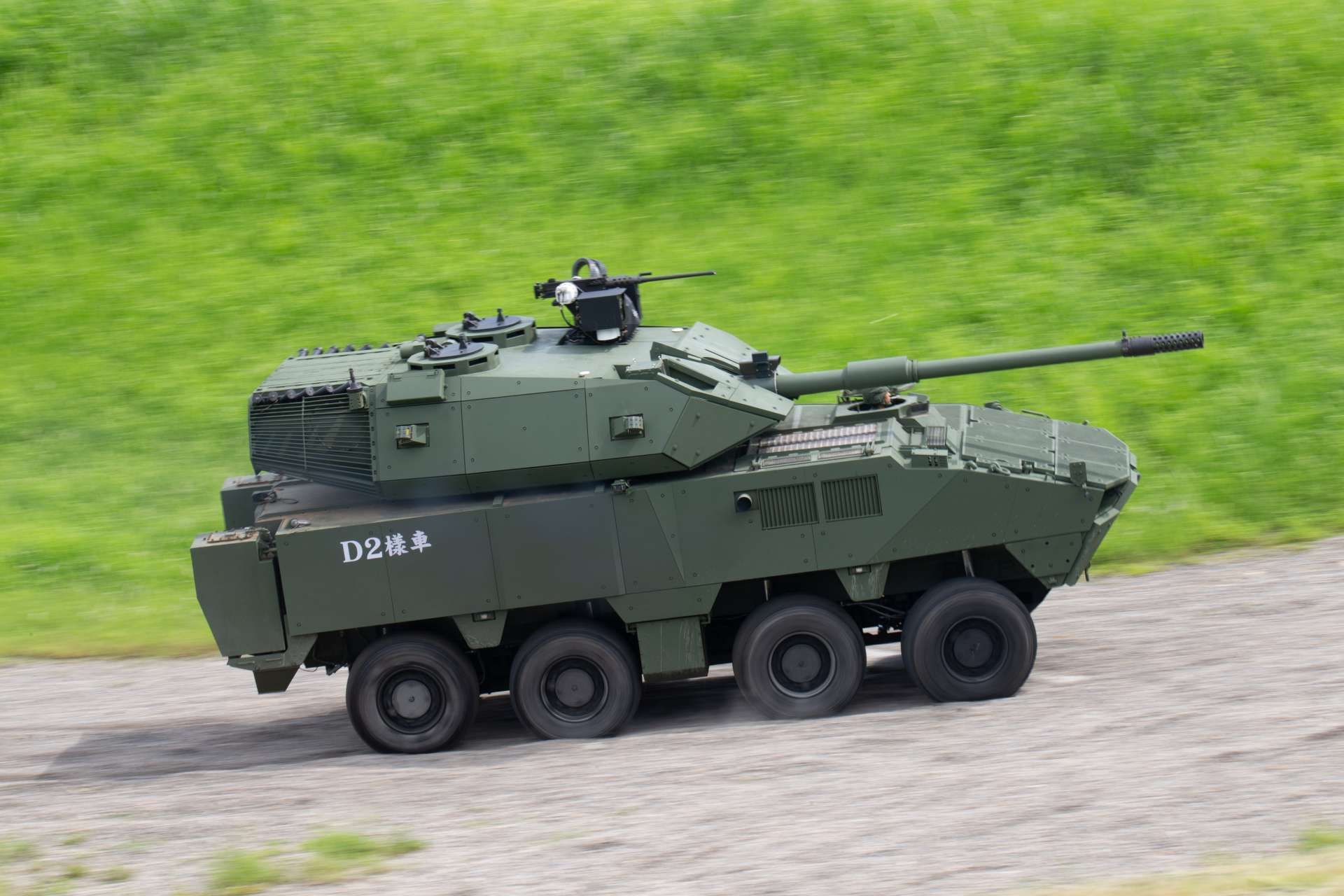Breaking News
Taiwan unveils a new 105mm 8x8 tank destroyer based on the future Clouded Leopard II vehicle.
On June 25, 2024, during a media event at Nantou, the Taiwanese Ministry of Defense (MoD) unveiled a new 105mm 8x8 tank destroyer, likely a precursor to the Clouded Leopard II infantry fighting vehicle. The D2 prototype underwent a braking test following straight-line acceleration at the Armament Bureau's maintenance center. This event underscored the vehicle's features, including a Hunter-Killer capability similar to that of the M1A2T tanks acquired from the United States, designed to enhance attack efficiency and enable continuous target engagement. The D3 model, an improved version, is expected to complete validation next year.
Follow Army Recognition on Google News at this link

This D2 prototype of a new 105mm 8x8 tank destroyer could likely be considered as a precursor to the Clouded Leopard II infantry fighting vehicle (Picture source: Taiwanese MoD)
The Clouded Leopard eight-wheeled armored vehicle, representing Taiwan's own Infantry Fighting Vehicle, includes several variants already in service. The 105mm wheeled tank destroyer is under development by Taiwan's Armament Bureau and the National Chung-Shan Institute of Science and Technology (NCSIST). Media representatives observed various performance tests at the manufacturing center in Nantou, including a 50% forward slope, a 30% side slope, a wave road surface, and high-speed braking, all of which were successfully completed.
The Taiwanese Army noted that the 105mm tank destroyer is still in the development phase. The Armament Bureau produced two prototypes (D1 and D2) between 2019 and 2023 in response to army requirements. Research and development assessments, finalized on February 2, 2023, included 42 tests such as "firing on the move," with 40 tests passing. Initial operational assessments, completed on August 18, 2023, covered 91 major and minor items, all meeting required standards.
Despite satisfactory test results, the Taiwanese army identified areas for improvement. The current prototype is 3.3 meters in height, but the army requires it to be under 3 meters, necessitating adjustments to the turret's internal layout. Consequently, the Ministry of National Defense approved funding for constructing a D3 prototype, with NCSIST handling turret development (NT$170 million, approximately $5,238,261.58) and the Armament Bureau responsible for the vehicle hull (NT$120 million, approximately $3,697,718.58), totaling approximately NT$290 million ($8,935,452.31). Production and validation of the D3 model are expected to be completed by 2025, incorporating 89% domestically produced parts.

Performance tests at the manufacturing center in Nantou included a 50% forward slope, a 30% side slope, a wave road surface, and high-speed braking. (Picture source: Taiwanese MoD)
Military personnel highlighted that domestic capabilities now allow independent production of components from the barrel to the turret. The barrel caliber matches that of existing M60A3 and CM11 tanks, allowing ammunition interchangeability. A demonstration showed the vehicle's ability to penetrate a 500mm thick steel plate from 2,000 meters away using 105mm armor-piercing fin-stabilized discarding sabot (APFSDS) rounds. The D2 prototype's barrel has been tested with 400 rounds, with an expected lifespan of 800 to 1,000 rounds. As announced by Army Recognition on April 5, 2024, this variant of the future Clouded Leopard II features a coaxial 7.62mm machine gun and a remotely operated weapon station (RWS) with a 12.7mm machine gun. According to Taeopdong, this RWS could act as the commander's sight, allowing it to direct the main gun via the electro-optical (EO) sight of the RWS.
The D2 prototype includes design modifications intended to enhance protection against small-caliber munitions, 12.7mm rounds, and RPGs, along with improved situational awareness through LED headlights and exterior EO/IR cameras for all-round vision. It is expected that this vehicle retains the Caterpillar C9 engine from the Clouded Leopard I, with a power increase from 450hp to 600hp, as previously reported by Army Recognition.
NCSIST Engineering Deputy Director Colonel Lin Yan-Guang confirmed that the vehicle has a Hunter-Killer capability similar to the M1A2T tanks acquired from the U.S. This feature allows simultaneous engagement and continuous target acquisition. The M1A2 and M1A1 differ in that the older M1A1 requires the commander and gunner to view the same target, allowing the commander to resume searching only after engagement. In contrast, the M1A2 permits the commander to continue searching for new targets while the gunner engages the identified target.

The remotely operated weapon station (RWS) could act as the commander's sight, allowing it to direct the main gun via the electro-optical sight of the RWS. (Picture source: Taiwanese MoD)
The Armament Bureau provided details on the vehicle's specifications: it can carry four personnel, achieve speeds exceeding 100 km/h, and its turret system, with dual-axis servo stabilization and six smoke grenade launchers on each side, enables firing on the move. The observation system supports all-weather operations, identifying vehicles at 2,000 meters and personnel at 1,200 meters. The manufacturing division includes the Armament Bureau 202 Factory (main contractor), NCSIST (turret system), and 209 Factory (chassis).
Military representatives stated that current tracked vehicles are unsuitable for coastal, beach, and riverine operations. The wheeled combat vehicle, with a maximum speed exceeding 100 km/h, offers greater mobility compared to tracked vehicles and is suitable for sand, riverine, and urban combat, meeting operational demands.
The domestically developed Clouded Leopard eight-wheeled armored vehicle series includes the CM-32, CM-33, and CM-34 variants, alongside the 105mm cannon-equipped battle cannon vehicle and the reconnaissance tactical wheeled vehicle currently under development. The CM-32 is equipped with a 40mm grenade launcher, similar to the CM-33, which features enhanced communication equipment. The CM-33 is the basic infantry fighting vehicle with a TS-96 remote weapon station, while the CM-34 is fitted with a 30mm MK44 chain gun acquired from U.S. company Orbital ATK. Although the 81mm mortar version has been completed, it is currently on hold due to lack of military demand.

The D2 prototype includes design modifications intended to enhance protection against small-caliber munitions, 12.7mm rounds, and RPGs, along with improved situational awareness through LED headlights and exterior EO/IR cameras for all-round vision. (Picture source: Taiwanese MoD)


























